-
twentytwentyone’s longstanding relationship with Robin Day is reflected through several new launches to celebrate the company’s 25th year. The award-winning Reclining chair will be issued as an Anniversary Edition. In collaboration with The Robin and Lucienne Day Foundation and Mourne Textiles, a special version has been realised, with walnut arms and archival textile woven in Ireland. The production of the Anniversary Edition will be limited to those ordered during 2021.
The Transparent Table is a somewhat undiscovered design. In fact, it had no name, until Paula Day suggested its current moniker. Only one is known to exist and was made by Robin Day for his own home in Cheyne Walk in the early 1960s. It was never produced commercially, and the sole example continued its central role in the couple’s living room when they moved to their home in Chichester.
We wanted to share thoughts and reflections on what makes these historic designs relevant and have approached Paula Day, founder and chair of the Robin and Lucienne Day Foundation and Mario Sierra, Creative Director of Mourne Textiles.

Robin Day seated at home in his Reclining chair ©Robin & Lucienne Day Foundation
-
Q&A
2021 Paula, with many of your parent’s designs still in production, what makes a classic design?
Paula I think a classic is a design which is absolutely of its time and yet transcends it by its sheer quality, coming to be seen as ‘timeless’. A design which is utterly original yet seems inevitable, as if it had somehow always existed.
2021 twentytwentyone wanted to combine materials in an edition that celebrated historic references. The use of walnut to echo the original mahogany armrests and an archival textile that recalled a longstanding relationship between Robin Day and Mourne.
Do you recall the texture and colours of upholsteries used in your parent’s house?
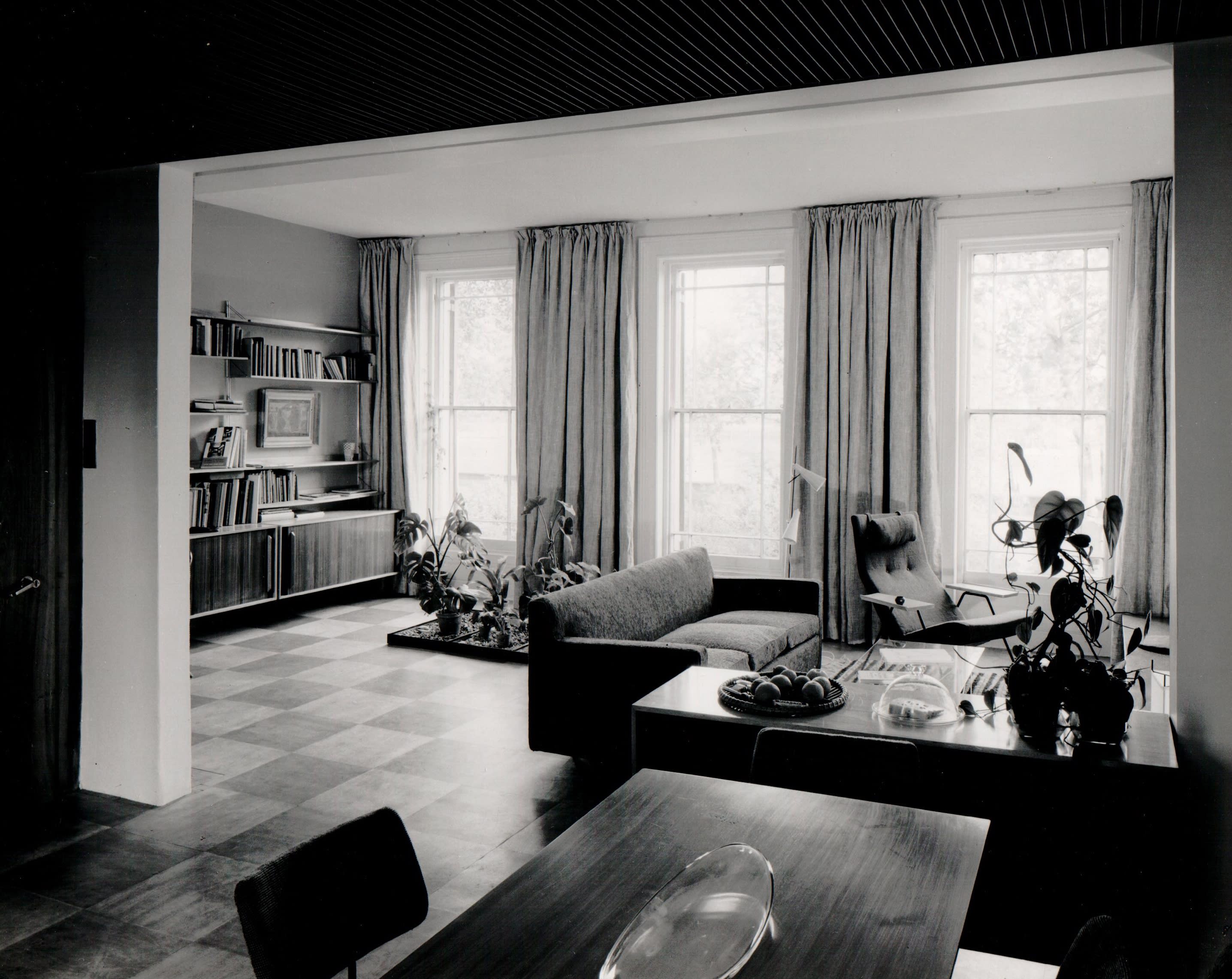
The Days home' in Cheyne Walk, London c. 1955 ©Robin & Lucienne Day Foundation
Paula I have early childhood memories of the living room at Cheyne Walk in the 1950s. My father’s Reclining Chair was mustard-coloured. The black and white striped rug was very rough and nubbly…I now realise that it was the original one which had been woven by Gerd Hay-Edie for my father’s room-set in the Homes & Gardens Pavilion at the Festival of Britain in 1951 and was exhibited again that year in his display for the Milan Triennale.
Mourne Textiles are now producing it as the Milano! In contrast to the lean and angular Reclining Chair, on the other side of the room a High, Wide and Handsome Armchair offered a welcoming lap to climb into. It was upholstered in a black and white textural weave – which I only realised was by Mourne Textiles when I saw it used again in 2015, on a twentytwentyone Edition of the Reclining Chair! Piece by piece, designs from the domestic landscapes of my childhood are returning to furnish people’s homes today.
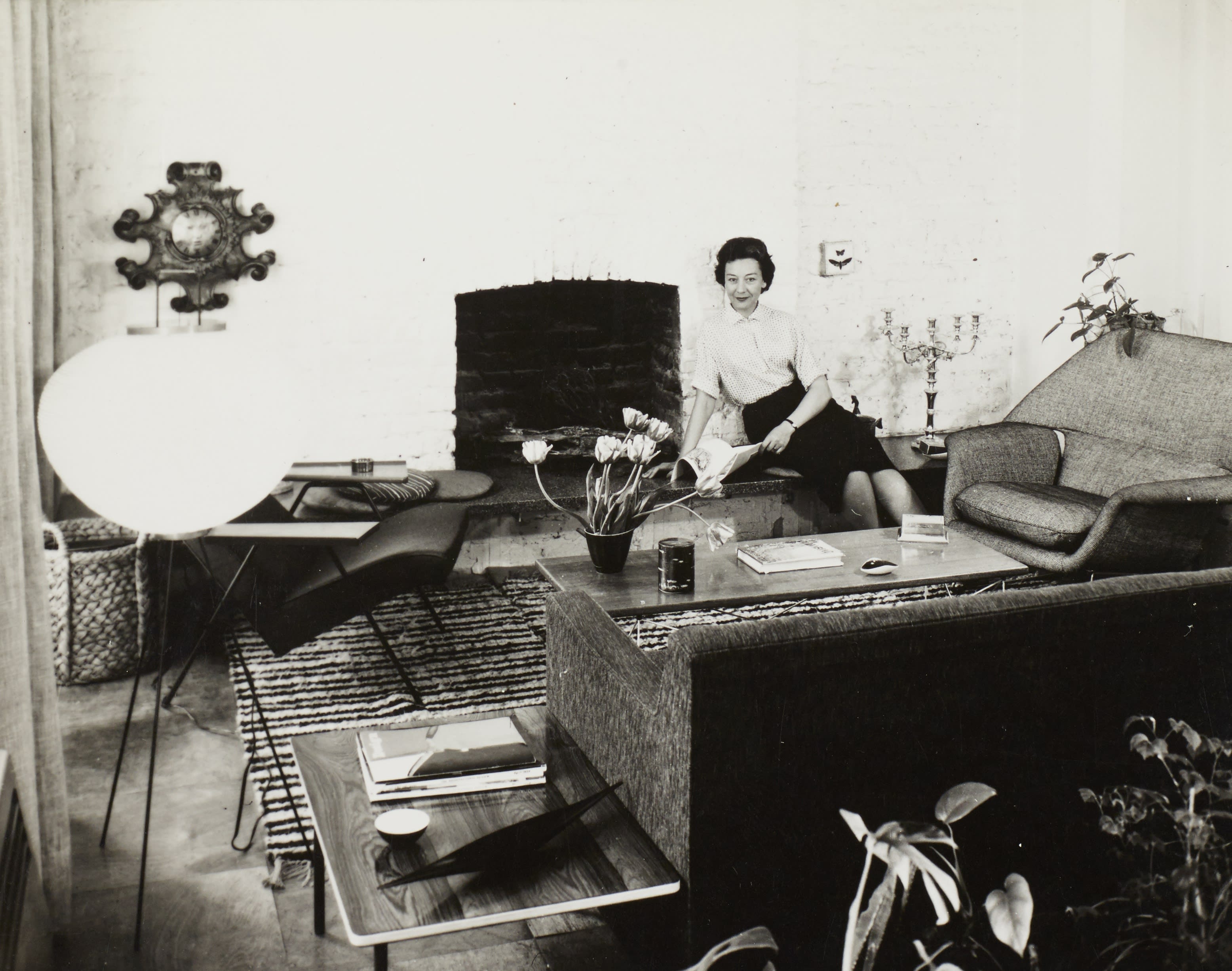
Lucienne Day at home with Reclining chair and Milano rug in the late 1950s ©Robin & Lucienne Day Foundation
2021 Mario, when we approached you with the brief to re-issue a deeply textured weave from your archive, how did you go about finding and selecting something appropriate.
Mario While looking through a box of archive samples for a suitable textured fabric, we came across a small swatch with a note attached from my grandmother.
‘Designed for Hille International LONDON – 1974, accepted but production “Got Stuck” due to wool prices up – up.’
Gerd Hay-Edie
The swatch was the same design as a sampler piece of fabric that I’ve grown up with, as a wall hanging in my home in the Mournes. This brightly coloured and highly textured piece of fabric is one that has always intrigued me, as I had not come across it anywhere in our order books.
We delved further into the archives, checking warping books from this period – we have a number of these books listing every warp ever made from the early 1950s! These records are combined with original order books and sample swatch books to determine when designs were made, the technical setup of the looms, the yarns and weights that were used and the clients who purchased the fabric originally. Gerd’s attention to detail and record-keeping remains an incredibly valuable aspect of Mourne Textiles.
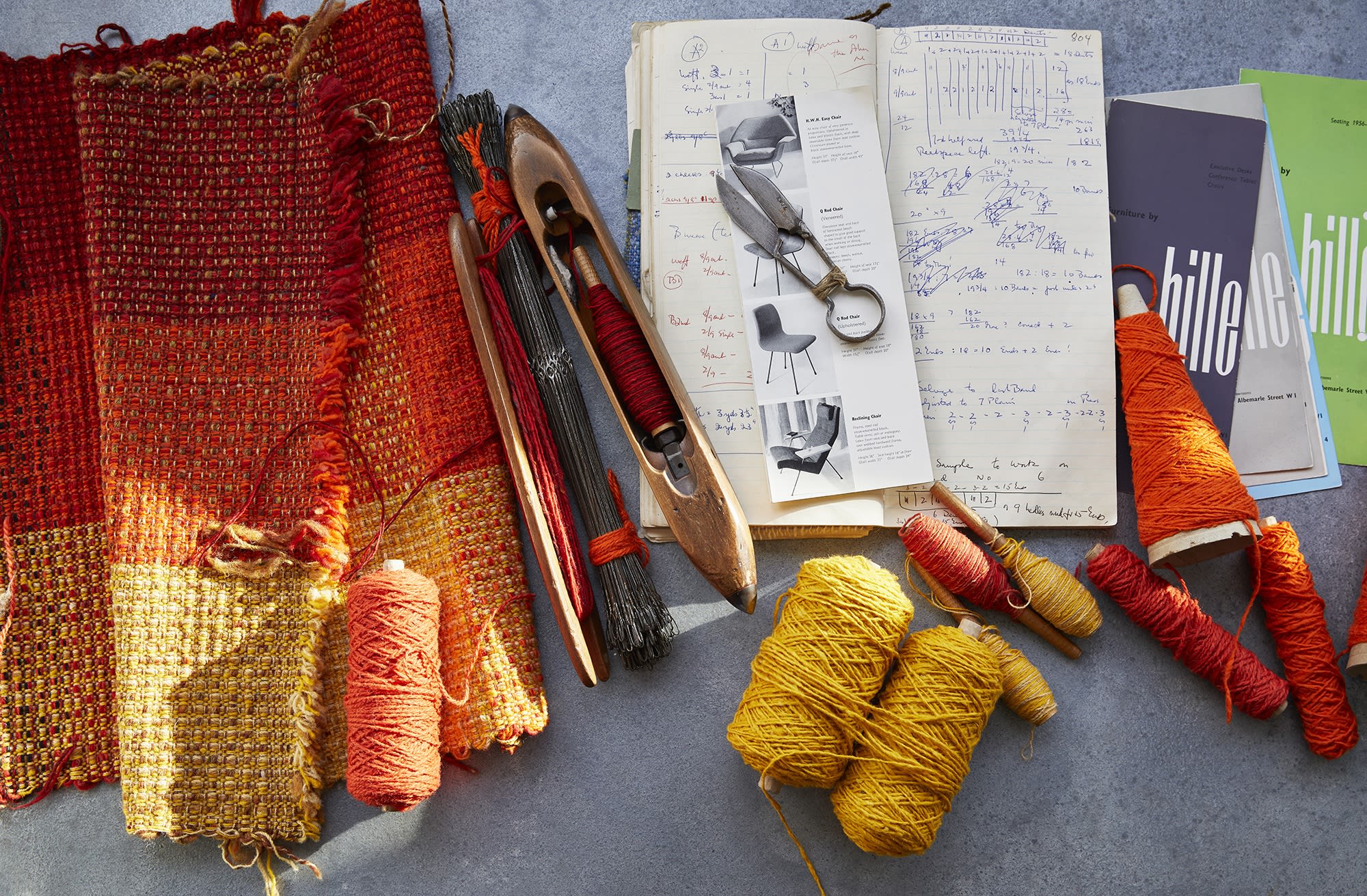
Reclining chair Anniversary Edition sampler ©Mourne Textiles
It soon became apparent that although a number of sample warps had been woven and the fabric had made it through the selection process with both with my grandmother and Robin Day / Hille, this particular design had never actually gone into production due to the rising cost of yarn. Cloughmore is a particularly heavy furnishing fabric that uses a great deal of wool in its production and it must have become too costly to become commercially viable.
I knew instantly that the twentytwentyone anniversary celebration would be a fantastic opportunity to re-issue this never-before-seen design, and feel that is extremely poignant that it would first be seen adorning a Robin Day classic.
2021 twentytwentyone believe in the longevity of design aesthetics and the selected use of appropriate materials. The relationship between Robin Day, Hille and Mourne textiles is longstanding, please share your understanding of the historical synergies Mario.
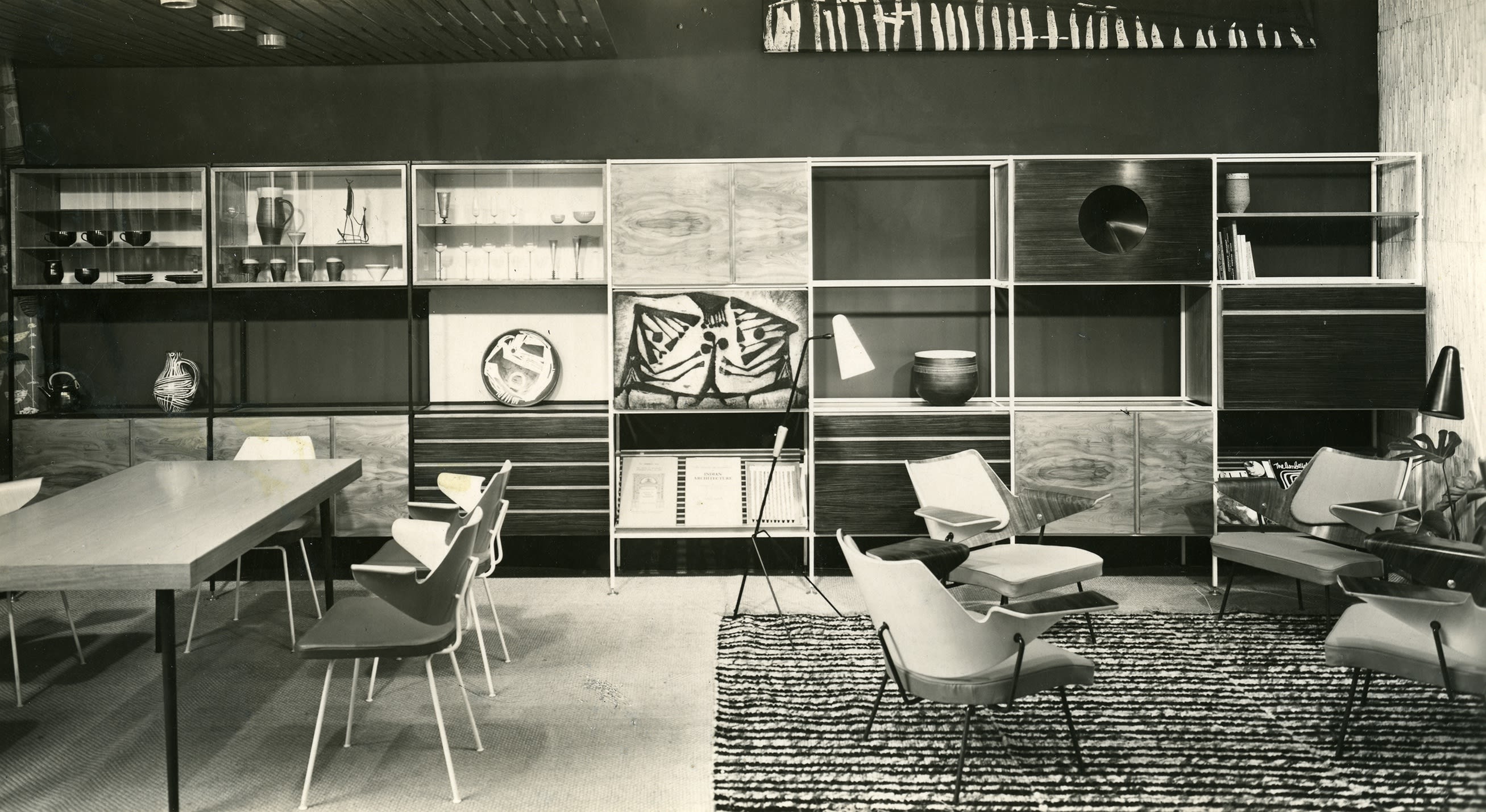
Robin Day/Hille exhibition at Milan 1951 ©Robin & Lucienne Day Foundation
Mario My grandmother first worked with Robin Day in 1951, when she was asked to weave a rug for the Le Triennale di Milano exhibition. We have an extract from a letter written by Robin Day to my grandmother;
'Of all the rugs which I have seen, only yours have got the character enough as background for my new designs of furniture to be exhibited at La Triennale de Milano, 1951.’
The collaboration was well received and in fact, earned both designers a prestigious silver award. Shortly after the event, Gerd received a letter from S.Hille of London, enquiring whether their firm could show her rugs alongside their furniture, in the soon to be opened showroom on Albemarle Street. Of course, at that time, Robin Day was the Chief Designer at Hille and so a working relationship that would span many years was born.
Whilst, Robin Day and my grandmother worked with very differing materials, I believe that there were similarities in their design process and ethos that highlight their many synergies. My grandmother was a pioneer of her time, her designs challenged the status quo and her weaving techniques and fabrics were unlike anything seen before. I believe that similarly, Robin Day was a visionary who created a new way of working that was both unique and exciting. His bold yet understated, minimal forms were and still are unmistakable, as is his lasting influence on furniture design.
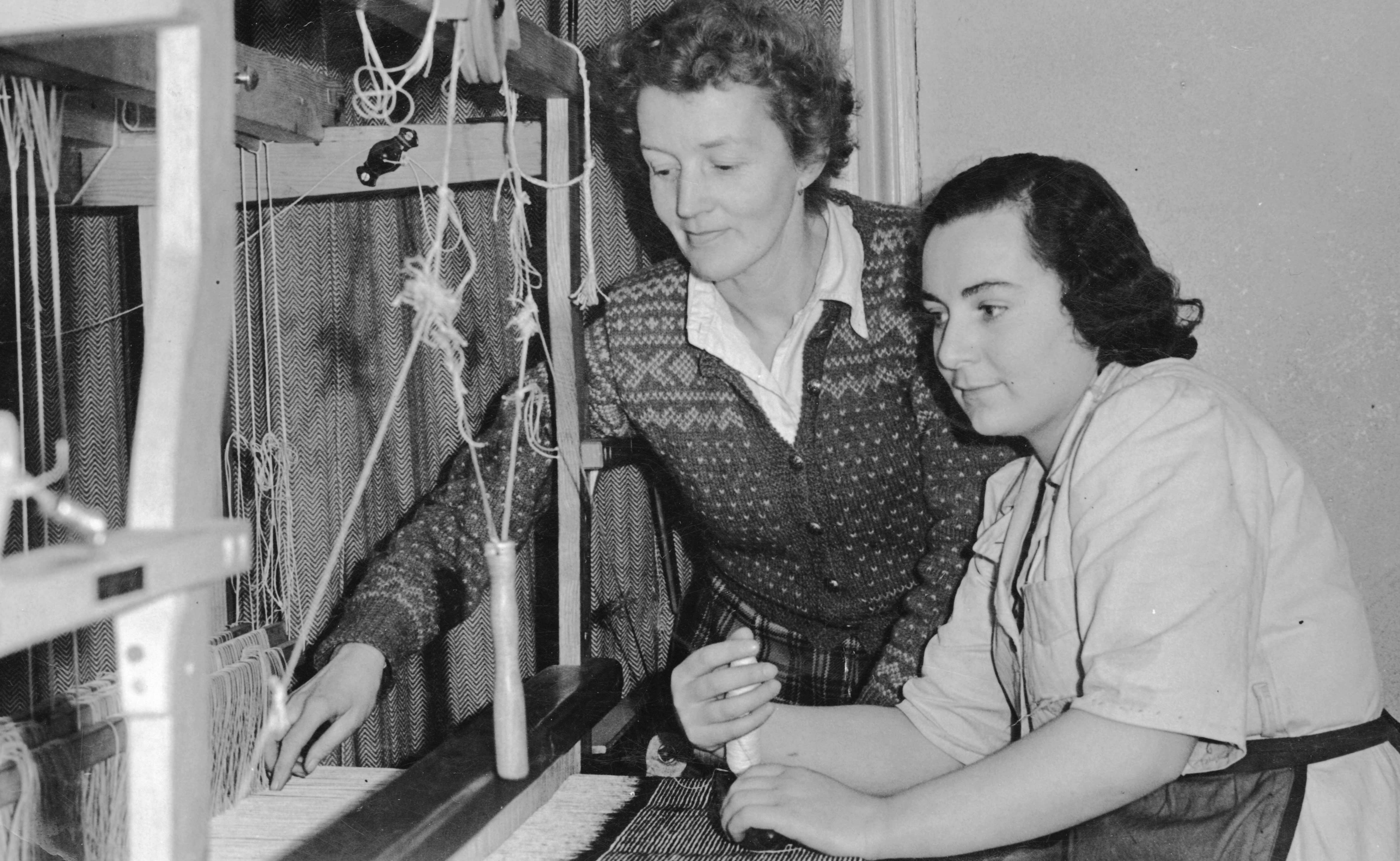
Gerd Hay-Edie checking furnishing fabric on the loom ©Mourne Textiles
My grandmother designed the Mourne Check and Mourne Mist fabrics for Robin Day and Hille in the 1950s and I am incredibly proud that both fabrics have stood the test of time and are still a popular choice with both our domestic and commercial customers alike.
2021 We will produce the Anniversary Edition Reclining chair throughout the year, and each chair will be marked with a brass plaque. Now you have raided the archive, Mario, do you have a plan for a more commercial production of the weave?
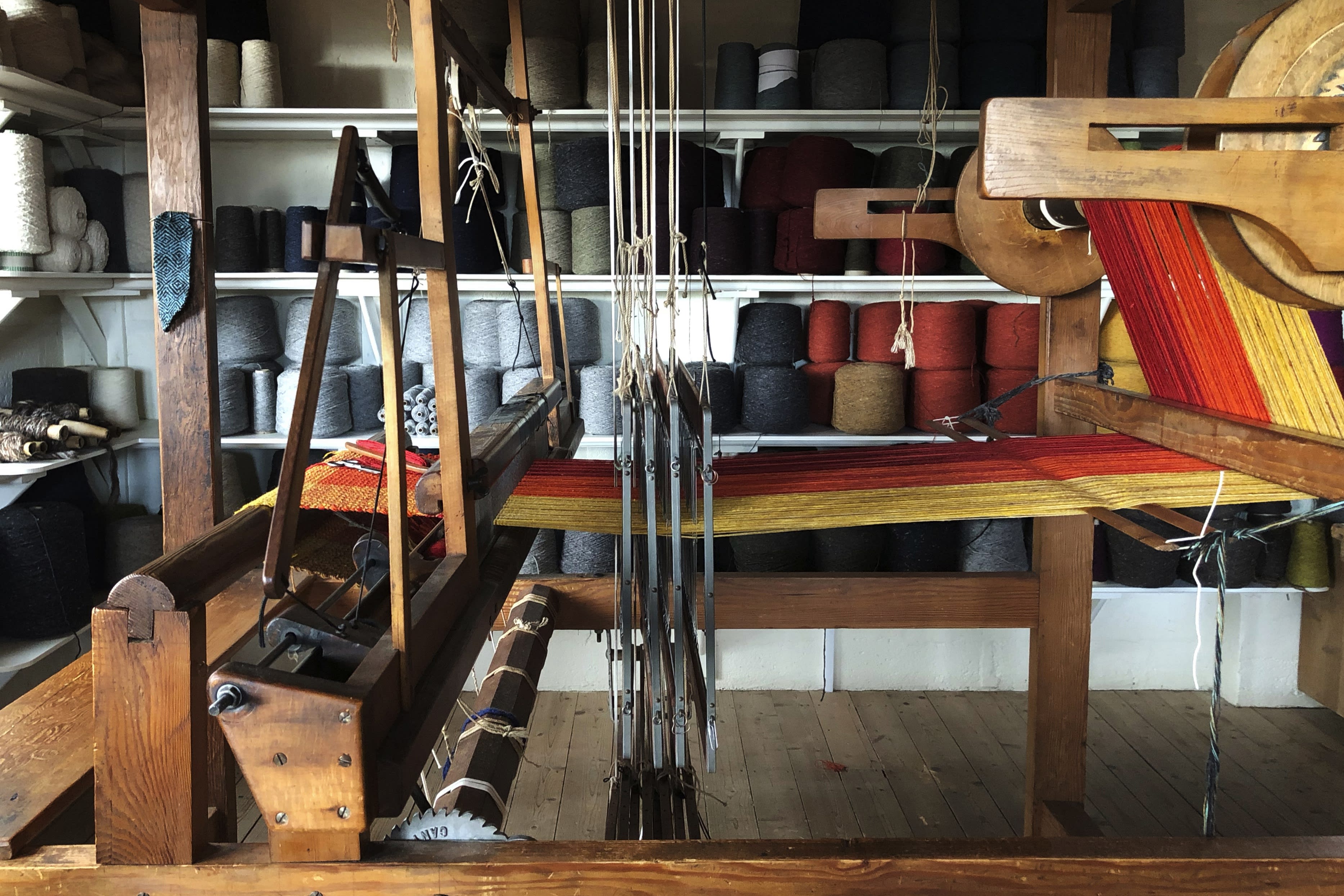
Sampling Anniversary Cloughmore fabric on the handloom ©Mourne Textiles
Mario There’s nothing I enjoy more than a few hours spent lost in the archives! It’s a very special element of Mourne Textiles and really ties our future to our heritage. Similarly, we now operate out of two mills; my grandmothers original, hand weaving mill and, just a stone's throw away, our industrial vintage power loom mill. It’s a set up that my grandmother had always planned but sadly was not able to achieve, so I am delighted to have been able to continue our story in this way.
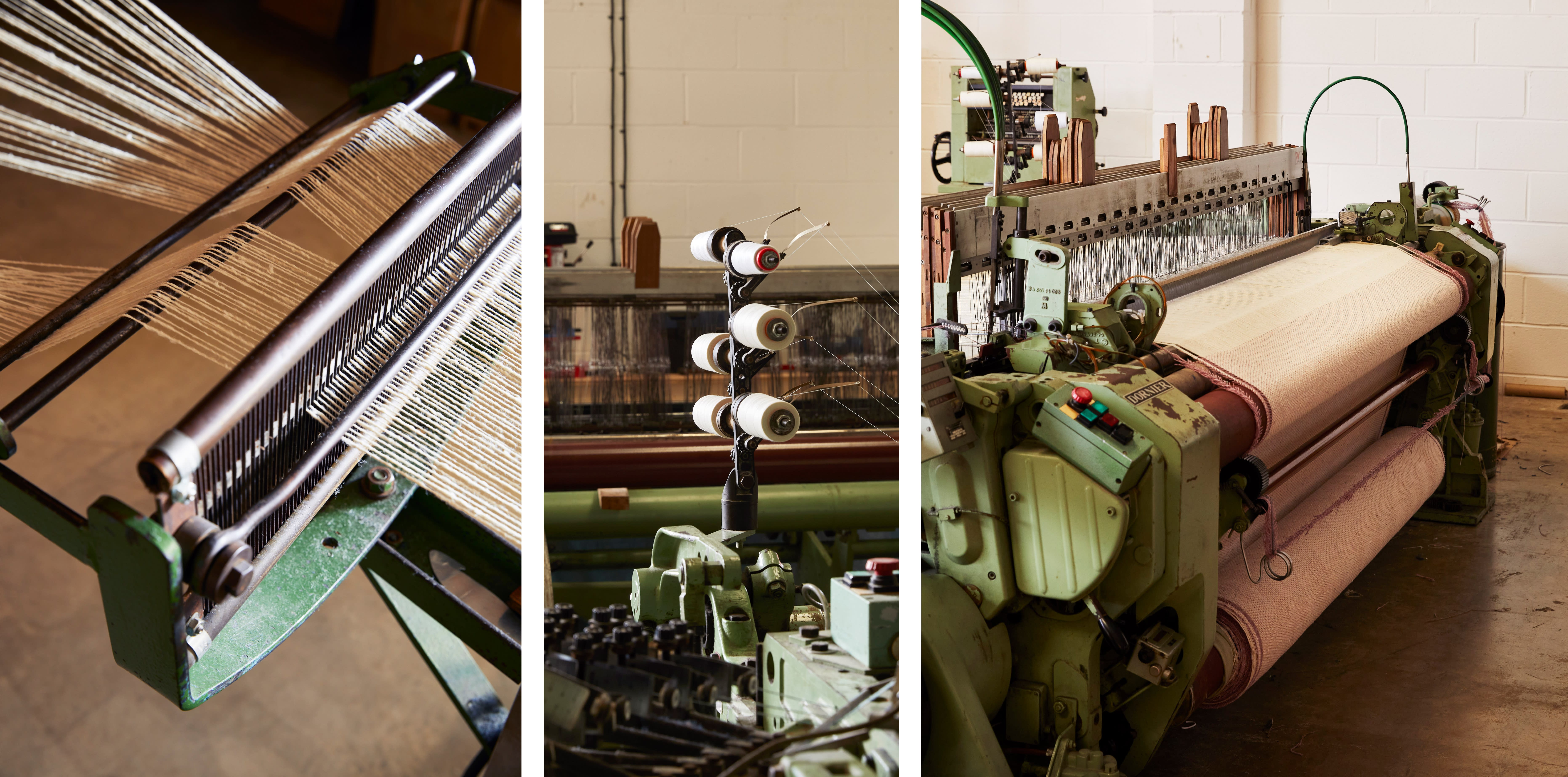
Mourne Textiles Vintage Power loom Milll ©Mourne Textiles
There’s a lovely rhythm and relationship between the two mills. The handlooms are perfect for research and development. Hours engrossed in the archives leads to hours of sampling new yarns, colourways and designs on the handlooms.
When a design is perfected, weaving dockets and notes are created in order for production to take place on the power looms. This has been exactly the case in the re-creation of the Cloughmore design. The first sample was handwoven at our workshop on a loom designed by my grandmother and based on looms she had used while living in China in the late 1930s. This narrow width loom with a weaving width of only 36 inches, is perfect for sample weaving and it’s been wonderful to bring this fabric back to life in this way!
We are currently experimenting with tones and shades and plan to offer the Cloughmore in a wider colour palette later in the year.
Behind the scenes at Mourne Textiles
The Transparent Table
The Robin Day Transparent table is being reproduced for the first time, with permission of the Robin and Lucienne Day Foundation. It’s a design that will have appeared in countless interior images of the Day’s homes, and whilst catalogued in Lesley Jackson’s authoritative book, it is a quiet, unassuming and possibly overlooked design.

The original Transparent Table in the living room of the Days' house at Cheyne walk ©Robin & Lucienne Day Foundation
2021 Paula, what are your memories of the table?
Paula It appeared in the living room when I was a teenager. By then the chairs had been replaced by two handsome three-seater Robin Day Forum sofas and an upholstered version of his 4-4000 easy chair, with a white rug. The Transparent Table sat in the centre of the sitting area, a shimmering presence which allowed light from the tall south-facing windows to flood the space.
My father had written "What one needs in today’s small rooms is to see over and under one’s furniture" (Robin Day, 1955). Previous coffee tables had also been glass-topped (on a plywood or steel rod base), but this design brought transparency to a new level, leaving sightlines completely open across the space to the elegant furniture. Perhaps we should have called it the Invisible Table!
When my parents moved to Chichester at the end of the century it went with them and took up its accustomed position between the Forum sofas. So, like other designs which completely satisfied them, they lived with it for nearly fifty years.
2021 It could be speculated that Robin’s design could be traced back to the perspex sculpture he created for the British Rayon Federation in the late 1940s. This in turn could have been influenced by a visit by Robin and Lucienne to the artist Naum Gabo in St.Ives. The clear acrylic sculpture employed a three-dimensional matrix of planes with cut-outs, some linked with stretched rayon threads. The British Rayon sculpture from 1949 was a key part of Robin Day’s exhibition work, prior to his more dedicated role as a furniture and product designer.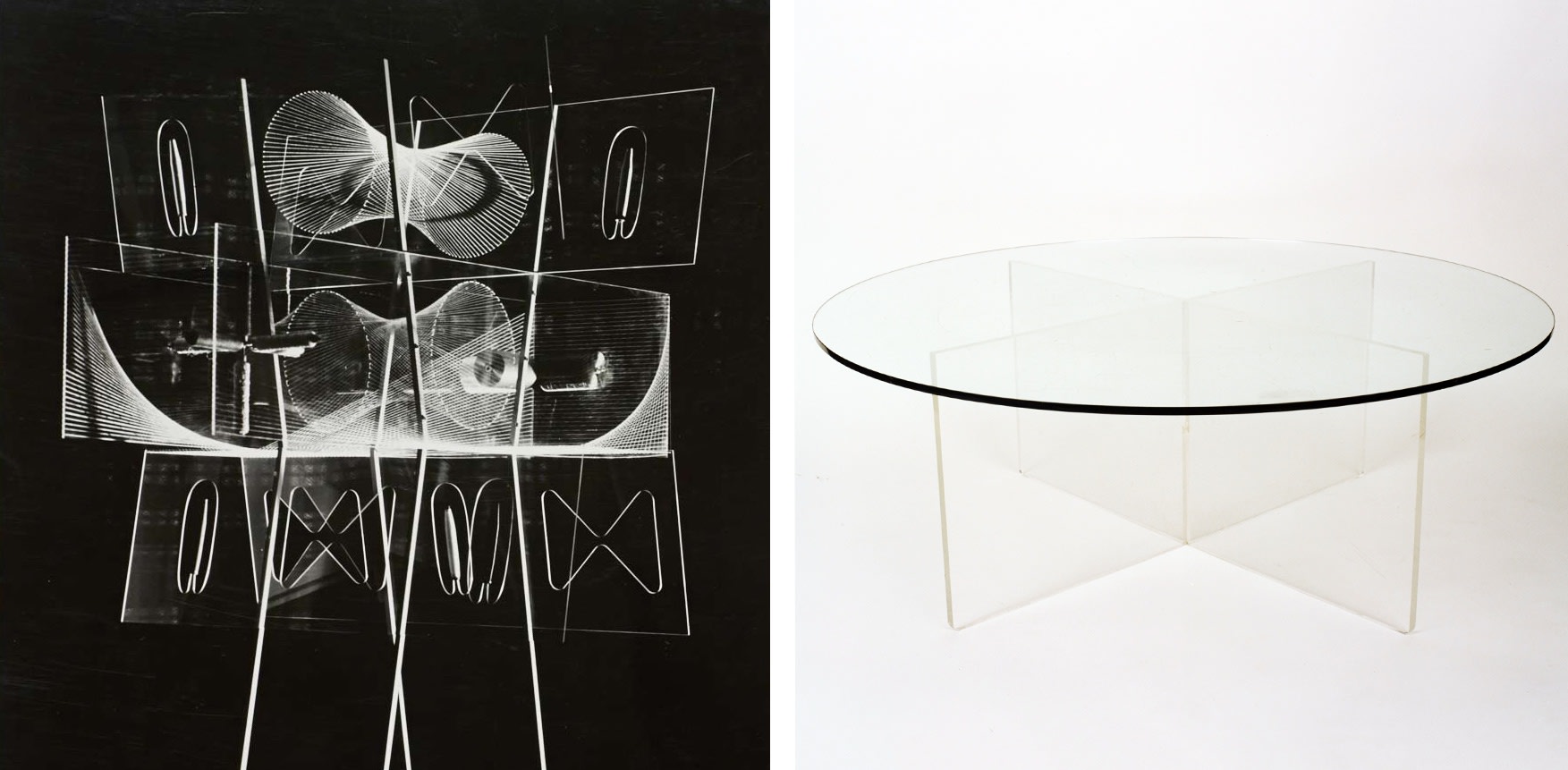
British Rayon Federation sculpture ©Robin & Lucienne Day Foundation
The original Transparent table from 'At Home with the Days' ©twentytwentyone
Paula That’s a very interesting thought. I’m not sure that there was a direct relationship with the British Rayon sculpture, but both demonstrate my father’s fluent deployment of appropriate modern materials to achieve specific purposes.
He was really very modest about his design work, which he saw as being mainly about finding effective solutions for practical requirements, making full (and sometimes very original) use of the materials available. But his visual sensitivity and quiet passion for integrity and elegance of construction meant that his solutions to design problems are often beautifully sculptural. His greatest designs have a quality which commands attention in any space – like sculptures in a gallery.
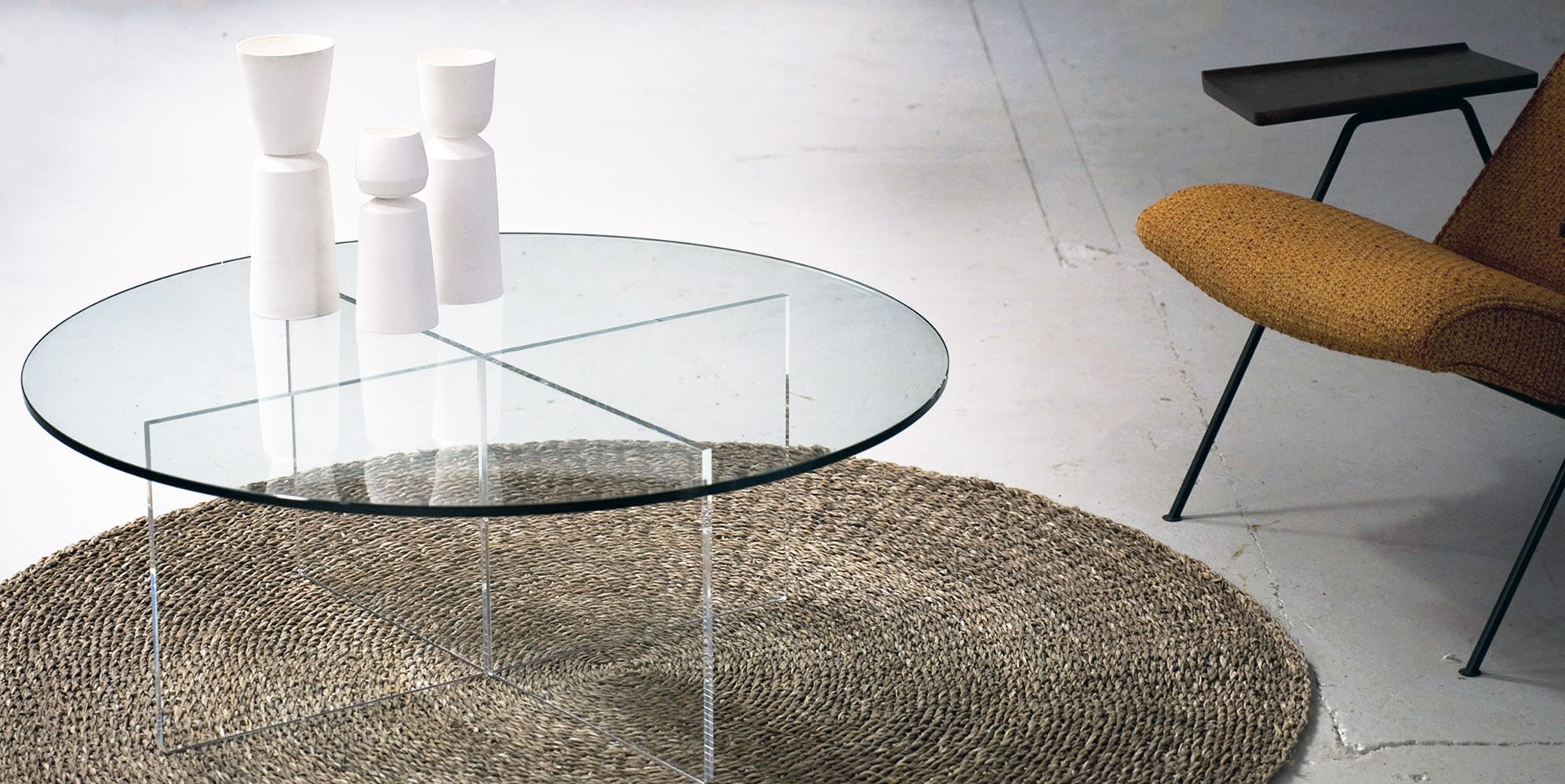
Transparent Table 2021 Edition ©twentytwentyone
2021 We are all agreed on the merit of enduring classic designs, and it is particularly important in respect of sustainable production and consumption of ‘evergreen’ products. With your knowledge of historic design, can you offer guidance to contemporary designers towards producing future classics?
Paula I wouldn’t presume to offer guidance to designers! But I can try to articulate why I think that so many of my father’s designs have endured.
Perhaps the best place to start is his well-known dictum:
‘A good design must fulfil its purpose well, be soundly constructed, and should express in its design this purpose and construction’.
Robin Day, 1962
This rather austere statement encapsulates his lifelong insistence that things must work. A chair must be comfortable. And it must be strong enough to withstand being used for decades. These are obvious things, but he was impatient that many new designs didn’t seem to take them into account.
The ‘express’ part is where aesthetics come in. Accepting the twin disciplines of function and construction, the good designer synthesizes an elegant solution. I guess that’s where ‘magic’ is possible….But I’m sure my father didn’t set out to design ‘future classics’ – he was busy focusing all his creative energy on the problems and opportunities of the moment.

Transparent table at the Days' Chichester home c.2007 © twentytwentyone
Robin Day c.1990s ©Robin & Lucienne Day Foundation
-
Reclining chair Anniversary Edition
Available through 2021, the edition is marked with a brass plaque.
£2,450
-
Transparent Table 2021 Edition
Edition of 25 pieces, with a laser-engraved signature.
£650